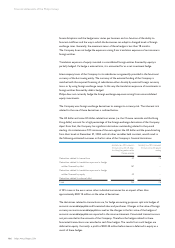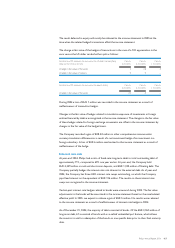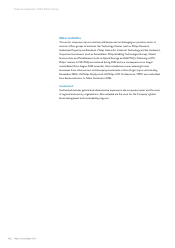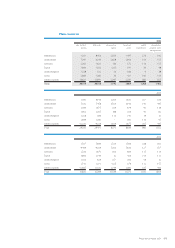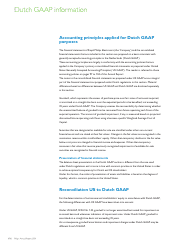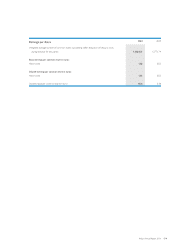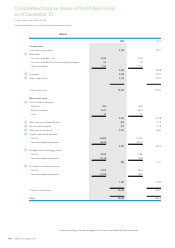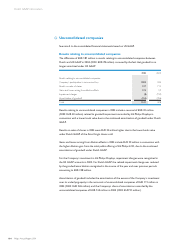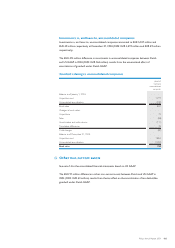Philips 2004 Annual Report Download - page 177
Download and view the complete annual report
Please find page 177 of the 2004 Philips annual report below. You can navigate through the pages in the report by either clicking on the pages listed below, or by using the keyword search tool below to find specific information within the annual report.Accounting principles applied for Dutch GAAP
purposes
The financial statements of Royal Philips Electronics (the ‘Company’) and the consolidated
financial statements that are included in this section are prepared on a basis consistent with
generally accepted accounting principles in the Netherlands (‘Dutch GAAP’).
These accounting principles are largely in conformity with the accounting policies that are
applied in the Company’s primary consolidated financial statements as prepared under United
States Generally Accepted Accounting Principles (‘US GAAP’). The reader is referred to these
accounting policies on pages 97 to 104 of this Annual Report.
The notes to the consolidated financial statements as prepared under US GAAP are an integral
part of the financial statements as prepared under Dutch regulations in this section. Material
differences based on differences between US GAAP and Dutch GAAP are disclosed separately
in this section.
Goodwill, which represents the excess of purchase price over fair value of net assets acquired,
is amortized on a straight-line basis over the expected periods to be benefited, not exceeding
20 years under Dutch GAAP. The Company assesses the recoverability by determining whether
the unamortized balance of goodwill can be recovered from future operating cash flows of the
acquired operation. The amount of goodwill impairment, if any, is measured based on projected
discounted future operating cash flows using a business-specific Weighted Average Cost of
Capital.
Securities that are designated as available-for-sale are classified under other non-current
financial assets and are stated at their fair values. Changes in the fair values are recognized in the
revaluation reserve within stockholders’ equity. Other-than-temporary declines in the fair value
below cost price are charged to financial income and expenses. Other-than-temporary
increases in fair value that reverse previously recognized impairments of available-for-sale
securities are recognized in financial income.
Presentation of financial statements
The balance sheet presentation in the Dutch GAAP section is different from the one used
under Dutch regulations and is more in line with common practice in the United States in order
to achieve optimal transparency for Dutch and US shareholders.
Under this format, the order of presentation of assets and liabilities is based on the degree of
liquidity, which is common practice in the United States.
Reconciliation US to Dutch GAAP
For the determination of net income and stockholders’ equity in accordance with Dutch GAAP,
the following differences with US GAAP have been taken into account:
Under US GAAP, SFAS No. 142, goodwill is no longer amortized but tested for impairment on
an annual basis and whenever indicators of impairment arise. Under Dutch GAAP, goodwill is
amortized on a straight-line basis not exceeding 20 years.
As a consequence, goodwill amortization and impairment charges under Dutch GAAP may be
different from US GAAP.
176 Philips Annual Report 2004
Dutch GAAP information


